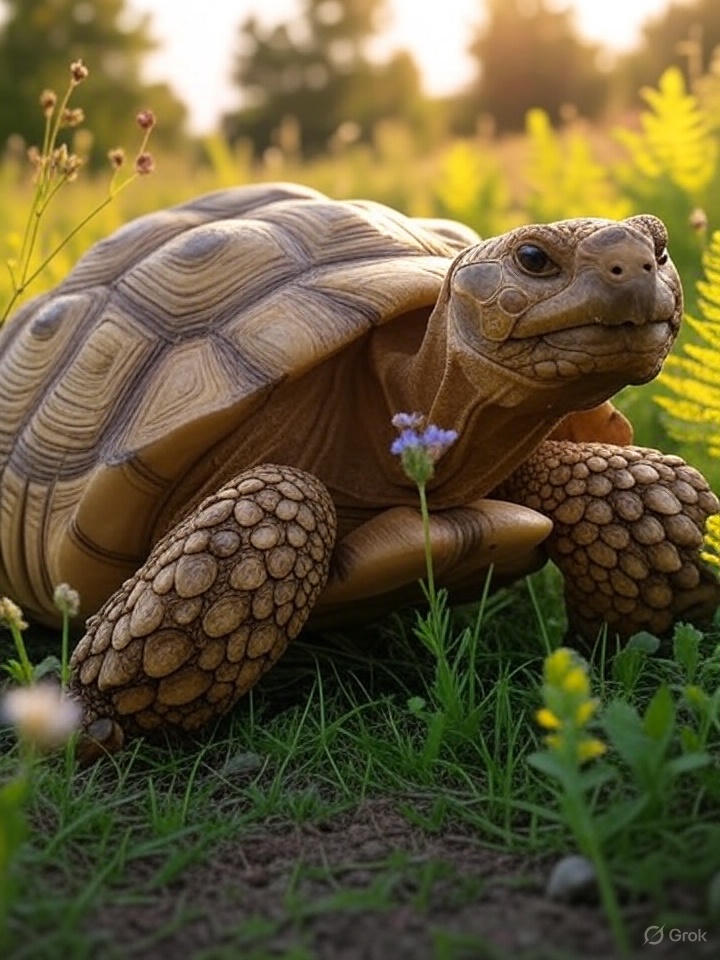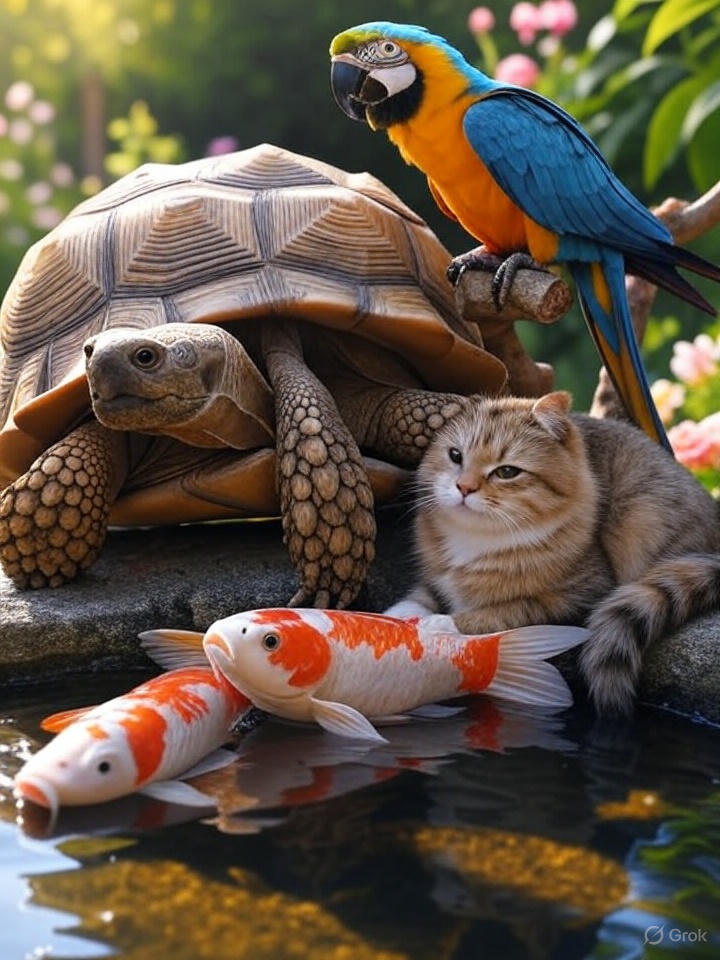Choosing a pet is one of life’s most rewarding decisions, but it’s also an emotional investment that comes with the inevitable reality of saying goodbye. For many prospective pet owners, longevity plays a crucial role in their decision-making process. Understanding which pets live the longest can help you make an informed choice and prepare for a lifelong companionship that spans decades rather than years.
Understanding Pet Lifespans: What Determines Longevity?
Pet longevity depends on numerous factors including genetics, size, care quality, diet, exercise, and living environment. According to research published in veterinary journals, smaller animals typically have faster metabolisms but often outlive their larger counterparts due to reduced strain on their cardiovascular systems. The quality of care, including proper nutrition, regular veterinary checkups, and appropriate living conditions, significantly impacts any pet’s lifespan.
Environmental factors also play a crucial role in pet longevity. Creating optimal living arrangements for your pets can substantially extend their lives by reducing stress, preventing disease, and ensuring they receive proper care throughout their lifetime.
Reptiles and Amphibians: The Ultimate Long-Term Companions
Tortoises: Century-Long Companions

Tortoises consistently rank as the longest-living pets available to ordinary pet owners. Many species regularly exceed 50 years, with some living well beyond 100 years. The Hermann’s tortoise typically lives 50-90 years, while larger species like the Aldabra giant tortoise can live over 150 years. These remarkable creatures require specialized care, including proper heating, UV lighting, and specific dietary requirements.
The key to tortoise longevity lies in their slow metabolism and evolutionary adaptations. Their ability to enter periods of dormancy during harsh conditions helps preserve their energy and extends their lifespan significantly. However, potential owners should understand that adopting a tortoise is often a multi-generational commitment.
Snakes: Decades of Serpentine Companionship
Many snake species make excellent long-term pets, with lifespans ranging from 15-30 years or more. Ball pythons commonly live 20-30 years in captivity, while some larger species like boa constrictors can reach 25-35 years. Royal pythons have been documented living over 40 years with proper care.
The longevity of snakes stems from their efficient metabolism and relatively simple care requirements. They don’t require daily feeding like mammals, and their stress levels remain low in appropriate environments with proper temperature gradients and hiding spots.
Lizards: Varied Lifespans Across Species
Lizard lifespans vary dramatically by species. Bearded dragons typically live 10-15 years, while blue-tongued skinks can reach 15-20 years. Some gecko species, particularly larger ones like tokay geckos, can live 15-25 years. Iguanas, despite their popularity, have moderate lifespans of 15-20 years but require extensive specialized care.
Birds: Feathered Friends for Decades
Large Parrots: The Ultimate Avian Companions
Large parrot species represent some of the longest-living pets available, often outliving their human companions. Macaws routinely live 50-80 years, with some documented cases exceeding 100 years. African grey parrots typically live 40-60 years, while cockatoos can reach 60-100 years depending on the species.
According to the Smithsonian National Zoo, the oldest recorded bird in captivity was a Major Mitchell’s cockatoo named Cookie, who lived to be 83 years old. These remarkable lifespans make large parrots significant long-term commitments requiring estate planning considerations.
Medium-Sized Birds: Balanced Longevity
Medium-sized birds offer substantial lifespans while remaining more manageable than their larger counterparts. Conures typically live 20-30 years, while cockatiels can reach 15-25 years with proper care. Caiques and smaller Amazon parrots often live 25-40 years, making them excellent choices for those seeking long-term avian companionship without the century-long commitment of larger species.
Smaller Birds: Shorter but Meaningful Relationships
While smaller birds don’t match the longevity of their larger relatives, many still provide substantial companionship periods. Budgerigars typically live 5-10 years, though exceptional individuals can reach 15 years. Canaries usually live 10-15 years, while finches generally have shorter lifespans of 5-9 years.
Aquatic Pets: Underwater Longevity Champions
Goldfish: More Than Carnival Prizes
Contrary to popular belief, goldfish can live exceptionally long lives when provided with proper care. While many people expect goldfish to live only a few years, well-cared-for goldfish routinely reach 10-30 years. The oldest recorded goldfish lived to 43 years old, according to Guinness World Records.
The key to goldfish longevity lies in appropriate tank size, water quality, and nutrition. Many goldfish die prematurely due to inadequate living conditions rather than natural lifespan limitations. Proper filtration, regular water changes, and spacious tanks dramatically extend goldfish lifespans.
Koi Fish: Pond Centenarians
Koi fish represent the ultimate in aquatic pet longevity, with lifespans regularly exceeding 50 years and some living over 200 years. The oldest recorded koi, named Hanako, lived to be 226 years old according to Japanese records. These remarkable fish require large outdoor ponds with excellent filtration systems and protection from predators.
Koi longevity stems from their hardy genetics, efficient metabolism, and the stability of well-maintained pond environments. Their ability to adapt to temperature changes and enter dormant states during winter contributes to their exceptional lifespans.
Other Long-Living Aquatic Species
Several other aquatic species offer impressive longevity. Some catfish species can live 15-25 years, while certain cichlids reach 10-18 years. Marine aquariums can house species like groupers and angelfish that may live 15-30 years with expert care.
Mammals: Shorter but Intensive Relationships
Rabbits: Decade-Long Companions
Domestic rabbits typically live 8-12 years, with some exceptional individuals reaching 15 years. Smaller rabbit breeds often outlive larger ones, following the general pattern seen across mammalian species. Proper diet, regular veterinary care, and spaying/neutering significantly impact rabbit longevity.
The relatively recent improvement in rabbit veterinary care has extended average lifespans considerably. House rabbits generally live longer than those kept outdoors due to protection from predators, weather extremes, and disease exposure.
Guinea Pigs: Social Long-Term Pets
Guinea pigs offer substantial companionship periods, typically living 4-8 years with some reaching 10 years. Their social nature means they’re often kept in pairs or groups, which can positively impact their mental health and longevity. Proper nutrition, including vitamin C supplementation, plays a crucial role in guinea pig health and lifespan.
Cats and Dogs: Traditional Companions
While cats and dogs don’t match the longevity of reptiles or birds, they remain popular choices for their interactive nature and emotional bonds. Cats typically live 12-18 years, with indoor cats generally outliving outdoor ones. Dogs show significant variation by breed, with smaller breeds often living 12-16 years while larger breeds may only live 6-10 years.
According to Forbes Health, factors affecting cat and dog longevity include genetics, size, diet, exercise, preventive veterinary care, and environmental factors. Mixed breeds often demonstrate hybrid vigor, potentially living longer than purebreds due to greater genetic diversity.
Factors Affecting Pet Longevity
Nutrition and Diet
Proper nutrition serves as the foundation for pet longevity across all species. Species-appropriate diets, portion control, and high-quality ingredients significantly impact lifespan. Obesity reduces longevity in virtually all pet species, while malnutrition can cause premature death or chronic health conditions.
Research published in veterinary nutrition journals consistently demonstrates the correlation between diet quality and lifespan. Pets fed premium, species-appropriate diets with proper portion control live significantly longer than those fed poor-quality or inappropriate foods.
Veterinary Care
Regular veterinary checkups enable early detection and treatment of health conditions that could otherwise shorten lifespans. Preventive care, including vaccinations, parasite control, and dental care, prevents many conditions that historically caused premature death in pets.
The advancement of veterinary medicine has dramatically extended pet lifespans over the past several decades. Treatments now available for conditions like cancer, kidney disease, and heart problems can add years to pets’ lives.
Environmental Enrichment
Mental stimulation and appropriate environmental conditions contribute significantly to pet longevity. Stressed animals experience compromised immune systems and increased disease susceptibility. Environmental enrichment, social interaction, and mental stimulation promote both physical and psychological health.
According to research from Wikipedia’s article on animal welfare, environmental enrichment reduces stress-related behaviors and promotes natural behaviors that contribute to overall health and longevity.
Genetic Factors
Genetics play a fundamental role in determining maximum potential lifespan across all species. However, environmental factors and care quality determine whether pets reach their genetic potential. Responsible breeding practices that prioritize health over appearance contribute to longer lifespans in many species.
Making the Right Choice for Your Lifestyle
Long-Term Commitment Considerations
Choosing a long-living pet requires careful consideration of your long-term plans, financial resources, and lifestyle changes. Pets that live several decades will experience multiple life stages and changing care requirements. Estate planning becomes important for pets with lifespans that may exceed their owners’ lives.
Consider your age, health, and family situation when choosing long-living pets. Young adults might welcome a 50-year commitment to a parrot, while older individuals might prefer pets with shorter lifespans or should arrange for their pets’ care in their wills.
Financial Implications
Long-living pets represent substantial financial commitments over their lifetimes. Veterinary care, food, housing, and other expenses accumulate significantly over decades. However, the cost per year often decreases with longer-living pets compared to repeatedly replacing shorter-lived ones.
Budget for annual veterinary care, emergency medical expenses, food, housing improvements, and potential boarding or pet-sitting costs. Long-living pets may also require specialized geriatric care in their later years, adding to lifetime costs.
Emotional Considerations
While longer-living pets provide extended companionship, they also represent longer emotional investments and more significant grief when they eventually pass. However, many pet owners find the extended relationships deeply rewarding and worth the eventual heartbreak.
Consider your emotional capacity for long-term pet care, including the patience required for pets that may live through multiple decades of changing behavior, health needs, and family circumstances.
Conclusion: Choosing Your Long-Term Companion
The question of which pets live the longest has a clear hierarchy: reptiles and amphibians dominate longevity rankings, followed by birds, then aquatic species, with mammals generally having shorter lifespans. Tortoises, large parrots, and koi fish represent the ultimate long-term pet commitments, often lasting multiple decades or even centuries.
However, the “best” pet isn’t necessarily the longest-living one. Consider your lifestyle, experience level, housing situation, and personal preferences alongside longevity factors. A well-cared-for cat providing 15 years of daily interaction might be more rewarding than a tortoise living 80 years with minimal social engagement.
The key to maximizing any pet’s lifespan lies in providing appropriate care, nutrition, veterinary attention, and environmental conditions. Regardless of species, pets receiving excellent care consistently outlive those receiving minimal attention.
Before committing to any long-living pet, research their specific needs, legal requirements, and care costs. Consider visiting with the species you’re interested in, consulting with experienced owners, and ensuring you can provide appropriate care throughout the animal’s entire lifespan.
Remember that choosing a pet is ultimately about finding a companion that fits your lifestyle and brings joy to your life. While longevity is an important consideration, the quality of the relationship and your ability to provide excellent care matter more than simply selecting the longest-living species available.
The most successful pet relationships, regardless of lifespan, are built on understanding, commitment, and love. Whether you choose a goldfish for a decade of aquatic tranquility or a macaw for a lifetime of colorful conversation, the key is matching your choice with your capacity for long-term care and emotional investment.




